Zeynab Warsame at The Believer:
 The craft of knitting is such a prominent literary act that a subgenre of literature—called “knit-lit”—has formed. Within this subgenre, there are several motifs, including what is colloquially referred to as “the sweater curse”: the idea that when someone knits a garment for their love interest, the act will seal the demise of their relationship. Knitting a garment by hand is a deeply intimate act, which perhaps explains why authors are attracted to its symbolic potential. Knitting also has an unassuming quality. The act evokes peace and domestic tranquility, and it is often employed to convey these sentiments. A knitter can become a vehicle for change, too, propelling a story forward through their handicraft. A character may weave intricate narrative webs, sometimes suggesting warmth or safety, and other times disguising the places where heartbreak, deceit, and evil may lie. If you look for them, you’ll find them—somebody in the corner, knitting a hat or a scarf, quite possibly something containing the depths of their affections or, just as probable, the names of the people they wish dead.
The craft of knitting is such a prominent literary act that a subgenre of literature—called “knit-lit”—has formed. Within this subgenre, there are several motifs, including what is colloquially referred to as “the sweater curse”: the idea that when someone knits a garment for their love interest, the act will seal the demise of their relationship. Knitting a garment by hand is a deeply intimate act, which perhaps explains why authors are attracted to its symbolic potential. Knitting also has an unassuming quality. The act evokes peace and domestic tranquility, and it is often employed to convey these sentiments. A knitter can become a vehicle for change, too, propelling a story forward through their handicraft. A character may weave intricate narrative webs, sometimes suggesting warmth or safety, and other times disguising the places where heartbreak, deceit, and evil may lie. If you look for them, you’ll find them—somebody in the corner, knitting a hat or a scarf, quite possibly something containing the depths of their affections or, just as probable, the names of the people they wish dead.
more here.

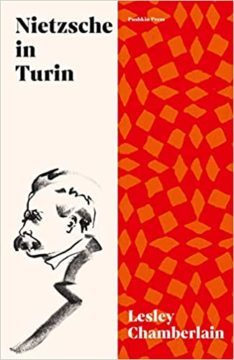 Wait for tea to cool before drinking it, avoid all alcohol, crowds, reading, writing letters, wear warm clothes in the evening, eat rhubarb from time to time, have a napkin at breakfast, remember notebook.” These memoranda, as recorded in Lesley Chamberlain’s Nietzsche in Turin, capture the regime Friedrich Nietzsche followed in that city, in the last of his many lodgings during his wanderings across Europe. He loved long walks, but any interruption of routine was as toxic for him as bad food, so he avoided fashionable cafés and promenades. Even a bookshop was off-limits for fear of bumping into an acquaintance who might want to talk about Hegel. He needed, above all, a quiet life.
Wait for tea to cool before drinking it, avoid all alcohol, crowds, reading, writing letters, wear warm clothes in the evening, eat rhubarb from time to time, have a napkin at breakfast, remember notebook.” These memoranda, as recorded in Lesley Chamberlain’s Nietzsche in Turin, capture the regime Friedrich Nietzsche followed in that city, in the last of his many lodgings during his wanderings across Europe. He loved long walks, but any interruption of routine was as toxic for him as bad food, so he avoided fashionable cafés and promenades. Even a bookshop was off-limits for fear of bumping into an acquaintance who might want to talk about Hegel. He needed, above all, a quiet life.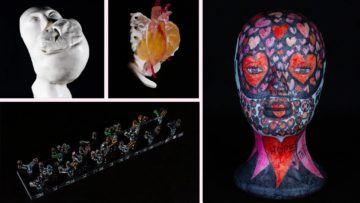 With so many lives affected by cancer — in the United States alone, about
With so many lives affected by cancer — in the United States alone, about 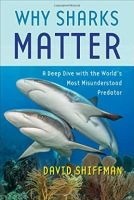 The ripple effects that come from the removal or diminished size of a predator’s population:
The ripple effects that come from the removal or diminished size of a predator’s population: Scene: Scandinavia, late summer, a cloudless night. The Dark Ages. Seemingly from nowhere, a quasihuman monster, descended from Cain, hears the sounds of warriors reveling in their Great Hall and decides to silence them. Creeping out of the unstructured darkness of his usual stomping grounds, this monster sneaks into the Great Hall and slaughters the warriors in their sleep. The monster develops a taste for blood, so these murders become habitual. For years.
Scene: Scandinavia, late summer, a cloudless night. The Dark Ages. Seemingly from nowhere, a quasihuman monster, descended from Cain, hears the sounds of warriors reveling in their Great Hall and decides to silence them. Creeping out of the unstructured darkness of his usual stomping grounds, this monster sneaks into the Great Hall and slaughters the warriors in their sleep. The monster develops a taste for blood, so these murders become habitual. For years.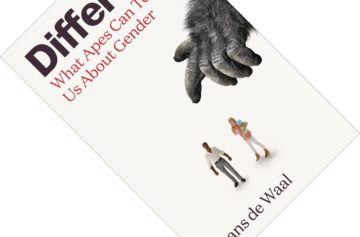 Wading into current gender debates is not for the faint of heart, but that has not discouraged Dutch-born primatologist Frans de Waal from treading where others might not wish to go. In Different, he draws on his
Wading into current gender debates is not for the faint of heart, but that has not discouraged Dutch-born primatologist Frans de Waal from treading where others might not wish to go. In Different, he draws on his 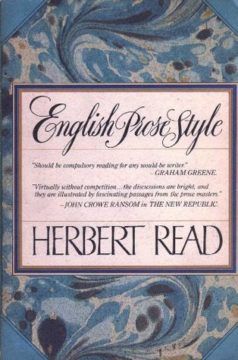 What is a paragraph? Consult a writing guide, and you will receive an answer like this: “A paragraph is a group of sentences that develops one central idea.” However solid such a definition appears on the page, it quickly melts in the heat of live instruction, as any writing teacher will tell you. Faced with the task of assembling their own paragraphs, students find nearly every word in the formula problematic. How many sentences belong in the “group?” Somewhere along the way, many were taught that five or six will do. But then out there in the world, they have seen (or heard rumors of) bulkier and slimmer specimens, some spilling over pages, some consisting of a single sentence. And how does one go about “developing” a central idea? Is there a magic number of subpoints or citations? Most problematic of all is the notion of the main “idea” itself. What qualifies? Facts? Propositions? Your ideas? Someone else’s?
What is a paragraph? Consult a writing guide, and you will receive an answer like this: “A paragraph is a group of sentences that develops one central idea.” However solid such a definition appears on the page, it quickly melts in the heat of live instruction, as any writing teacher will tell you. Faced with the task of assembling their own paragraphs, students find nearly every word in the formula problematic. How many sentences belong in the “group?” Somewhere along the way, many were taught that five or six will do. But then out there in the world, they have seen (or heard rumors of) bulkier and slimmer specimens, some spilling over pages, some consisting of a single sentence. And how does one go about “developing” a central idea? Is there a magic number of subpoints or citations? Most problematic of all is the notion of the main “idea” itself. What qualifies? Facts? Propositions? Your ideas? Someone else’s?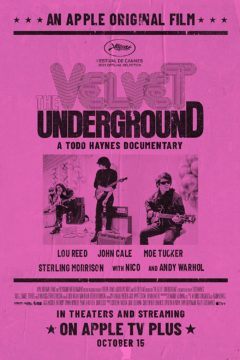 AT THE BEGINNING OF
AT THE BEGINNING OF Hospital patients are at risk of a number of life-threatening complications, especially sepsis—a condition that can kill within hours and contributes to one out of three
Hospital patients are at risk of a number of life-threatening complications, especially sepsis—a condition that can kill within hours and contributes to one out of three  Shortly after my parents died in 2017, I nearly lost custody of my dog, Zoe, in my divorce. When we were reunited, I remember telling her firmly, “You cannot die now,” even though she had just turned 15. Not long after, the vet told me that new lab work indicated kidney failure. I was quite glad then that Zoe couldn’t talk, at least not in the traditional sense. We had no painful discussions about quality-of-life issues or end-of-life concerns.
Shortly after my parents died in 2017, I nearly lost custody of my dog, Zoe, in my divorce. When we were reunited, I remember telling her firmly, “You cannot die now,” even though she had just turned 15. Not long after, the vet told me that new lab work indicated kidney failure. I was quite glad then that Zoe couldn’t talk, at least not in the traditional sense. We had no painful discussions about quality-of-life issues or end-of-life concerns. In 2017, I published my fourth novel,
In 2017, I published my fourth novel,  The omicron variant did indeed become
The omicron variant did indeed become 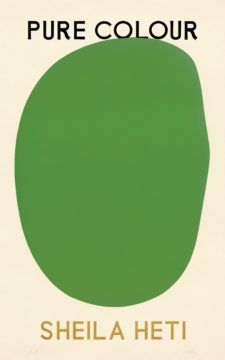 On the fourth page of Pure Colour, the fourth and most recent novel by the Canadian writer Sheila Heti, it is proposed that there are three kinds of beings on the face of the earth. They are each a different kind of “critic,” tasked with helping God to improve upon His “first draft” of the universe. There are birds who “consider the world as if from a distance” and are interested in beauty above all. There are fish who “critique from the middle” and are consumed by the “condition of the many.” And there are bears who “do not have a pragmatic way of thinking” and are “deeply consumed with their own.” The three main characters in the novel track with the three types: Mira, the art critic and main character, is a bird; Mira’s father, whose death takes up the middle part of the novel, is a bear; and Mira’s romantic interest and colleague at a school for art critics, Annie, is a fish.
On the fourth page of Pure Colour, the fourth and most recent novel by the Canadian writer Sheila Heti, it is proposed that there are three kinds of beings on the face of the earth. They are each a different kind of “critic,” tasked with helping God to improve upon His “first draft” of the universe. There are birds who “consider the world as if from a distance” and are interested in beauty above all. There are fish who “critique from the middle” and are consumed by the “condition of the many.” And there are bears who “do not have a pragmatic way of thinking” and are “deeply consumed with their own.” The three main characters in the novel track with the three types: Mira, the art critic and main character, is a bird; Mira’s father, whose death takes up the middle part of the novel, is a bear; and Mira’s romantic interest and colleague at a school for art critics, Annie, is a fish.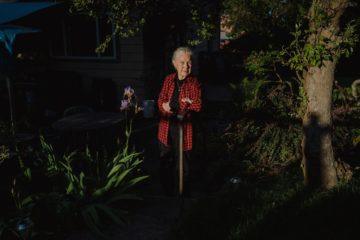 Americans aged sixty-two and older are the fastest-growing demographic of student borrowers. Of the forty-five million Americans who hold student debt, one in five are over fifty years old. Between 2004 and 2018, student-loan balances for borrowers over fifty increased by five hundred and twelve per cent. Perhaps because policymakers have considered student debt as the burden of upwardly mobile young people, inaction has seemed a reasonable response, as if time itself will solve the problem. But, in an era of declining wages and rising debt, Americans are not aging out of their student loans—they are aging into them.
Americans aged sixty-two and older are the fastest-growing demographic of student borrowers. Of the forty-five million Americans who hold student debt, one in five are over fifty years old. Between 2004 and 2018, student-loan balances for borrowers over fifty increased by five hundred and twelve per cent. Perhaps because policymakers have considered student debt as the burden of upwardly mobile young people, inaction has seemed a reasonable response, as if time itself will solve the problem. But, in an era of declining wages and rising debt, Americans are not aging out of their student loans—they are aging into them. Last May, after the Isla Vista shooter’s manifesto revealed a deep misogyny, women went online to talk about the violent retaliation of men they had rejected, to describe the feeling of being intimidated or harassed. These personal experiences soon took on a sense of universality. And so #yesallwomen was born—yes all women have been victims of male violence in one form or another. I was bothered by the hashtag campaign. Not by the male response, which ranged from outraged and cynical to condescending, nor the way the media dove in because the campaign was useful fodder. I recoiled from the gendering of pain, the installation of victimhood into the definition of femininity—and from the way pain became a polemic.
Last May, after the Isla Vista shooter’s manifesto revealed a deep misogyny, women went online to talk about the violent retaliation of men they had rejected, to describe the feeling of being intimidated or harassed. These personal experiences soon took on a sense of universality. And so #yesallwomen was born—yes all women have been victims of male violence in one form or another. I was bothered by the hashtag campaign. Not by the male response, which ranged from outraged and cynical to condescending, nor the way the media dove in because the campaign was useful fodder. I recoiled from the gendering of pain, the installation of victimhood into the definition of femininity—and from the way pain became a polemic.